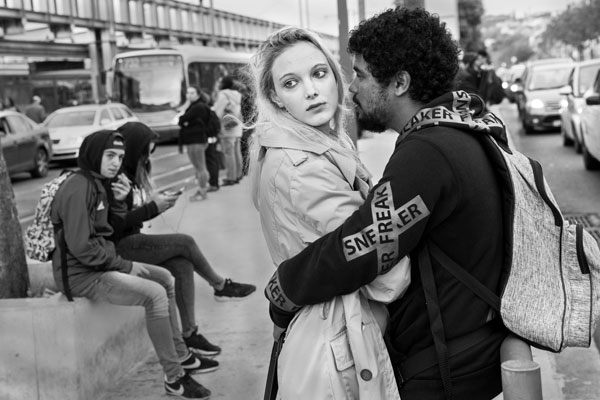The Single Strategy To Use For Framing Streets
The Single Strategy To Use For Framing Streets
Blog Article
Everything about Framing Streets
Table of ContentsGetting The Framing Streets To WorkThe Main Principles Of Framing Streets Little Known Facts About Framing Streets.8 Easy Facts About Framing Streets DescribedFraming Streets for BeginnersThings about Framing Streets
Photography category "Crufts Canine Program 1968" by Tony Ray-Jones Street digital photography (additionally occasionally called honest digital photography) is photography carried out for art or questions that features unmediated opportunity experiences and random occurrences within public areas, normally with the purpose of catching pictures at a definitive or emotional minute by careful framing and timing. 
The Ultimate Guide To Framing Streets
Susan Sontag, 1977 Road digital photography can focus on individuals and their actions in public. In this regard, the street digital photographer resembles social docudrama professional photographers or photojournalists who also work in public areas, yet with the objective of recording newsworthy events. Any of these photographers' images may catch people and residential or commercial property noticeable within or from public places, which commonly entails navigating honest issues and laws of personal privacy, protection, and property.
Representations of daily public life create a style in nearly every period of world art, starting in the pre-historic, Sumerian, Egyptian and early Buddhist art periods. Art dealing with the life of the road, whether within views of cityscapes, or as the dominant concept, appears in the West in the canon of the Northern Renaissance, Baroque, Rococo, of Romanticism, Realistic look, Impressionism and Post-Impressionism.
The Facts About Framing Streets Revealed
Louis Daguerre: "Boulevard du Temple" (1838 or 1839) In 1838 or 1839 the initial picture of figures in the street was tape-recorded by Louis-Jacques-Mand Daguerre in one of a set of daguerreotype views taken from his studio window of the Blvd du Holy place in Paris. The second, made at the height of the day, reveals an uninhabited stretch of street, while the other was taken at concerning 8:00 am, and as Beaumont Newhall reports, "The Boulevard, so frequently loaded with a moving bunch of pedestrians and carriages was completely solitary, other than a person that was having his boots combed.
His boots and legs were well specified, but he is without body or head, because these were in activity." Charles Ngre, waterseller Charles Ngre. https://www.pageorama.com/?p=framingstreets1 was the very first photographer to attain the technical class required to sign up people in activity on the road in Paris in 1851. Digital Photographer John Thomson, a Scotsman dealing with journalist and social protestor Adolphe Smith, published Street Life in London in twelve regular monthly installations beginning in February 1877
Framing Streets - Truths
Eugene Atget is concerned as a progenitor, not due to the fact that he was the initial of his kind, but as an outcome of the popularisation in the late 1920s of his document of Parisian streets by Berenice Abbott, that was inspired to take on a comparable documents of New york city City. [] As the city developed, Atget helped to promote Parisian roads as a worthy subject for digital photography.

The 5-Minute Rule for Framing Streets
In between 1946 and 1957 Le Groupe des XV every year exhibited job of this kind. Andre Kertesz. Circus, Budapest, 19 May 1920 Street photography formed the major content of two events at the Gallery of Modern Art (Mo, MA) in New York curated by Edward Steichen, 5 French Professional Photographers: Brassai; Cartier-Bresson, Doisneau, Ronis, Izis in 1951 to 1952, and Post-war European Photography in 1953, which exported the principle of great post to read road photography globally.

Framing Streets for Beginners
The recording equipment was 'a surprise video camera', a 35 mm Contax concealed underneath his coat, that was 'strapped to the upper body and attached to a long wire strung down the ideal sleeve'. His work had little contemporary influence as due to Evans' sensitivities about the originality of his project and the personal privacy of his subjects, it was not released until 1966, in the book Numerous Are Called, with an intro created by James Agee in 1940.
Helen Levitt, after that an educator of children, linked with Evans in 193839. She recorded the transitory chalk drawings - Best Zoom Lens that became part of youngsters's road culture in New york city at the time, in addition to the kids who made them. In July 1939, Mo, MA's new digital photography area consisted of Levitt's operate in its inaugural exhibitRobert Frank's 1958 book,, was considerable; raw and often out of focus, Frank's pictures questioned traditional digital photography of the time, "challenged all the official rules laid down by Henri Cartier-Bresson and Walker Evans" and "flew in the face of the wholesome pictorialism and genuine photojournalism of American magazines like LIFE and Time".
Report this page